Wind Could Power 30 Percent of Global Electricity Production By 2050
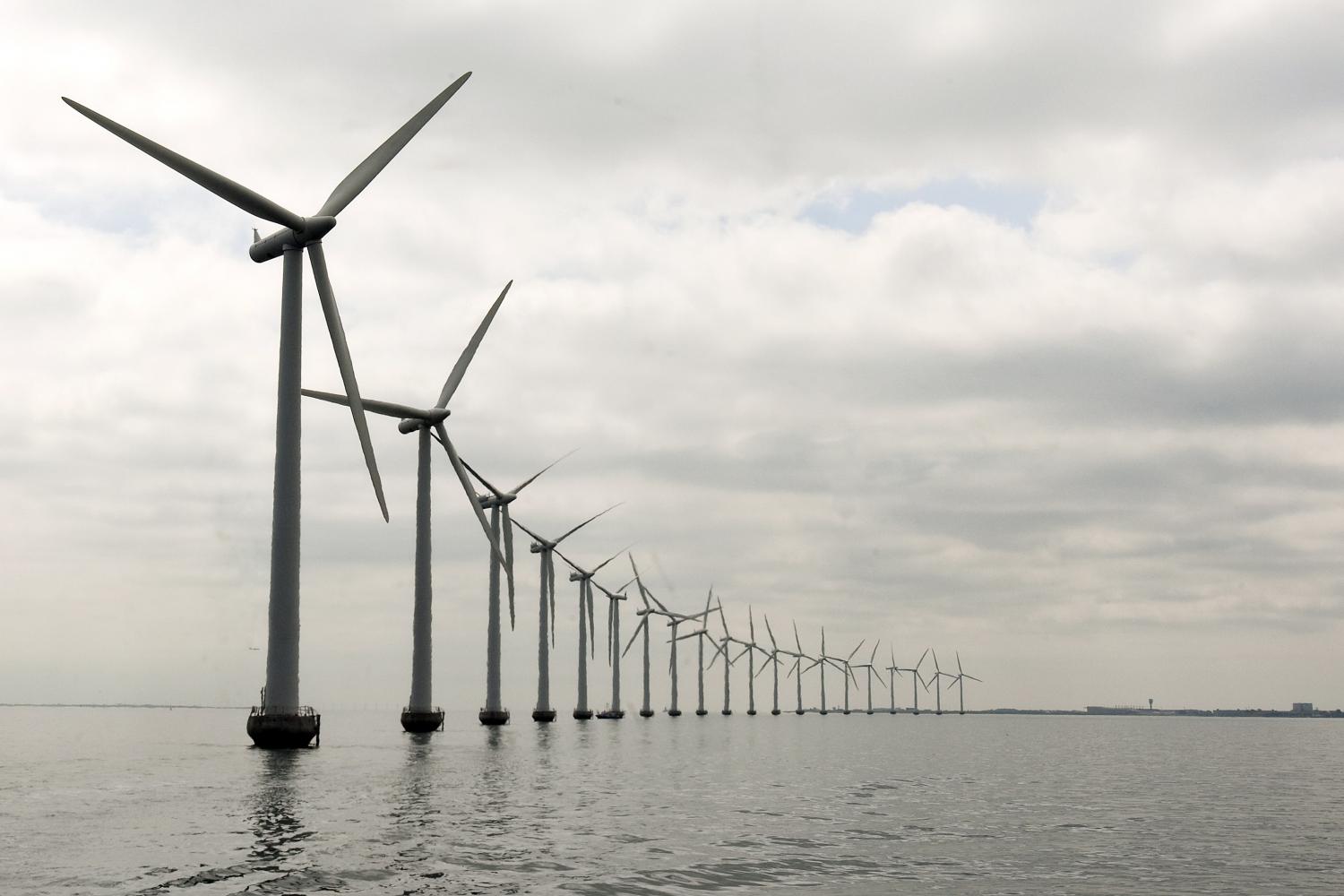
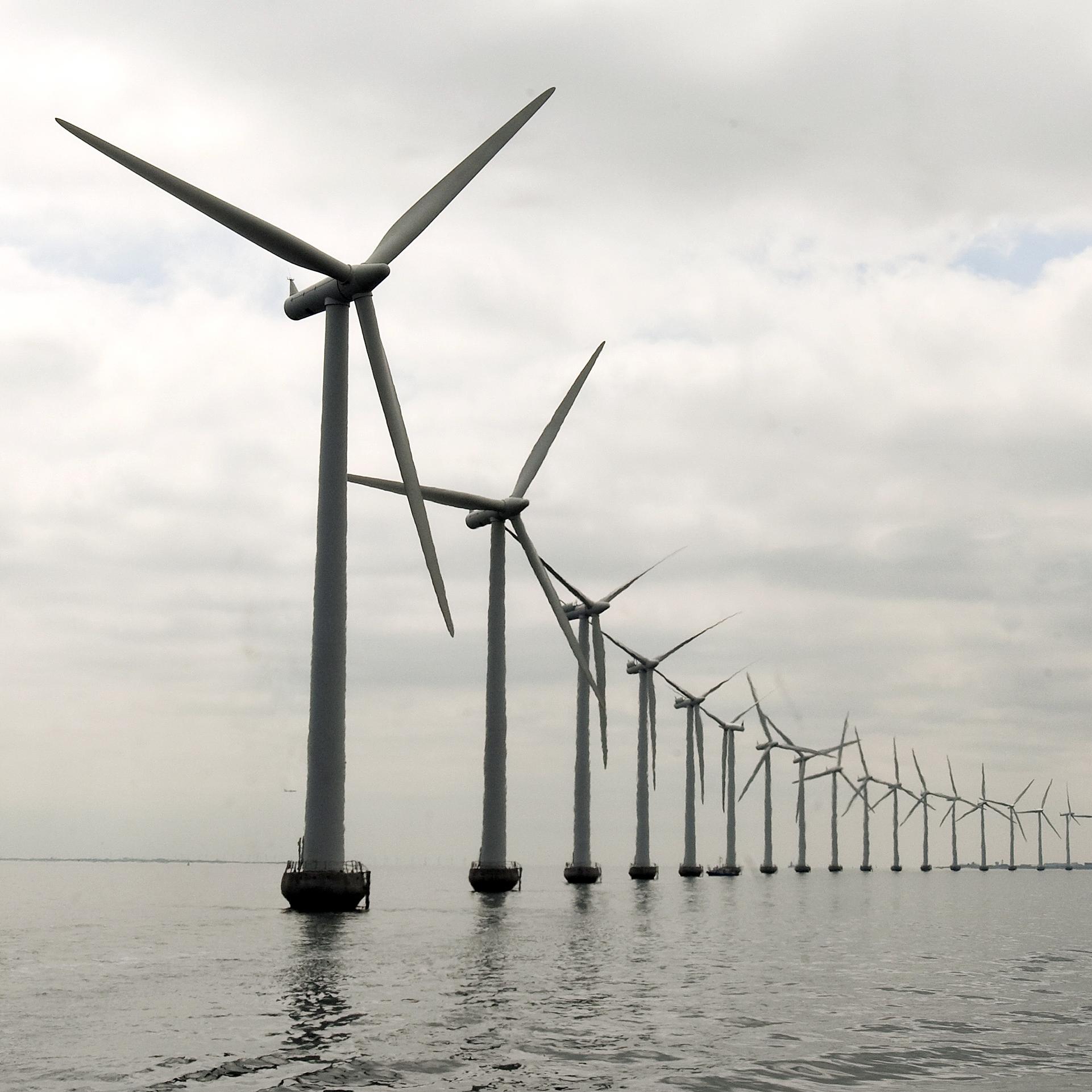
Wind energy will supply 30 percent of all global electricity production by 2050, with 12 percent coming from offshore wind and 18 percent from onshore wind, Norwegian risk management provider DNV GL predicts in a new report.
Wind power has become a major contributor to the clean energy transition in the U.S. and across the globe, and the industry has made significant advances both in technology and in bringing costs down.
Wind and solar are both on their way toward grid parity with fossil fuels, meaning they will be able to generate power at a leveled cost of electricity that is equal to or less than the price of power from the electric grid, which is dominated by fossil fuel-generated electricity. In other words: Wind and solar will cost the same or less than coal and natural gas—as early as the mid 2020s in some countries.
An added perk: Water savings from wind energy
Bringing wind energy’s costs down has a direct benefit to both human and environmental health. Wind energy does not produce greenhouse gas emissions when generating electricity and it uses no water, a significant benefit over the very thirsty fossil fuel and nuclear energy sectors.
Wherever wind (or solar) can be deployed and coal and natural gas can be ramped down, water needed for generating electricity can be used for other needs, such as municipal drinking water or maintaining environmental flows in bodies of water to protect ecosystems. In many places, where climate change means increased water stress, this is an important factor to consider.
As the technology matures, costs have come down and more offshore wind is being deployed worldwide. The support in the U.S. seems to be growing slowly but surely. Further, the biggest markets developing are in places like the west coast of the United States, Spain, France, Asian countries like Japan, and island communities, all of which are facing increasing stressful water quantity issues.
Wind turbines and extreme weather
There is a concern about offshore wind in the face of climate change—namely, how well turbines can withstand extreme weather.
Wind speeds are considerably faster offshore than onshore, and recent hurricanes have seen winds up to 185 miles per hour. Models have shown that offshore turbines may not be able to withstand hurricane winds, and recent experience demonstrates that the more extreme hurricanes of the past few years have battered turbines—for example, in Puerto Rico during Hurricane Maria.
Still, more resilient energy systems are needed overall. Even if a turbine survives a storm and the traditional grid still goes down, there will be nothing for the turbine to connect to in order to provide usable energy. Thinking about the system as a whole is imperative.
However, the industry knows this challenge exists and is rising to meet it. The U.S. Department of Energy is funding research and development into improved turbine technology that can withstand the high wind speeds. And DNV GL's report points to a recent industry collaboration called Alleviating Cyclone and Earthquake Challenges for Wind Farms (ACE) that will define safety levels for wind farms and create best practices for the entire offshore wind industry. A further plot twist, however, is that offshore wind turbines might actually reduce precipitation from hurricanes on land.
In its report, Offshore Wind: The Power to Progress, DNV GL notes that the U.S. alone has an offshore wind potential of 2,000 gigawatts, which is double the nation’s current electricity use.
Industry is already addressing the technology needs of wind to withstand extreme weather, and as more wind energy is generated—both onshore and offshore—it can help to reduce water stress and carbon-altering emissions. Offshore installations might just be the latest wind in clean energy’s sails.
Image credit: Flickr/United Nations Photo
Common Ground on Climate Change: U.S. Labor and Business Leaders Stand By Paris Agreement
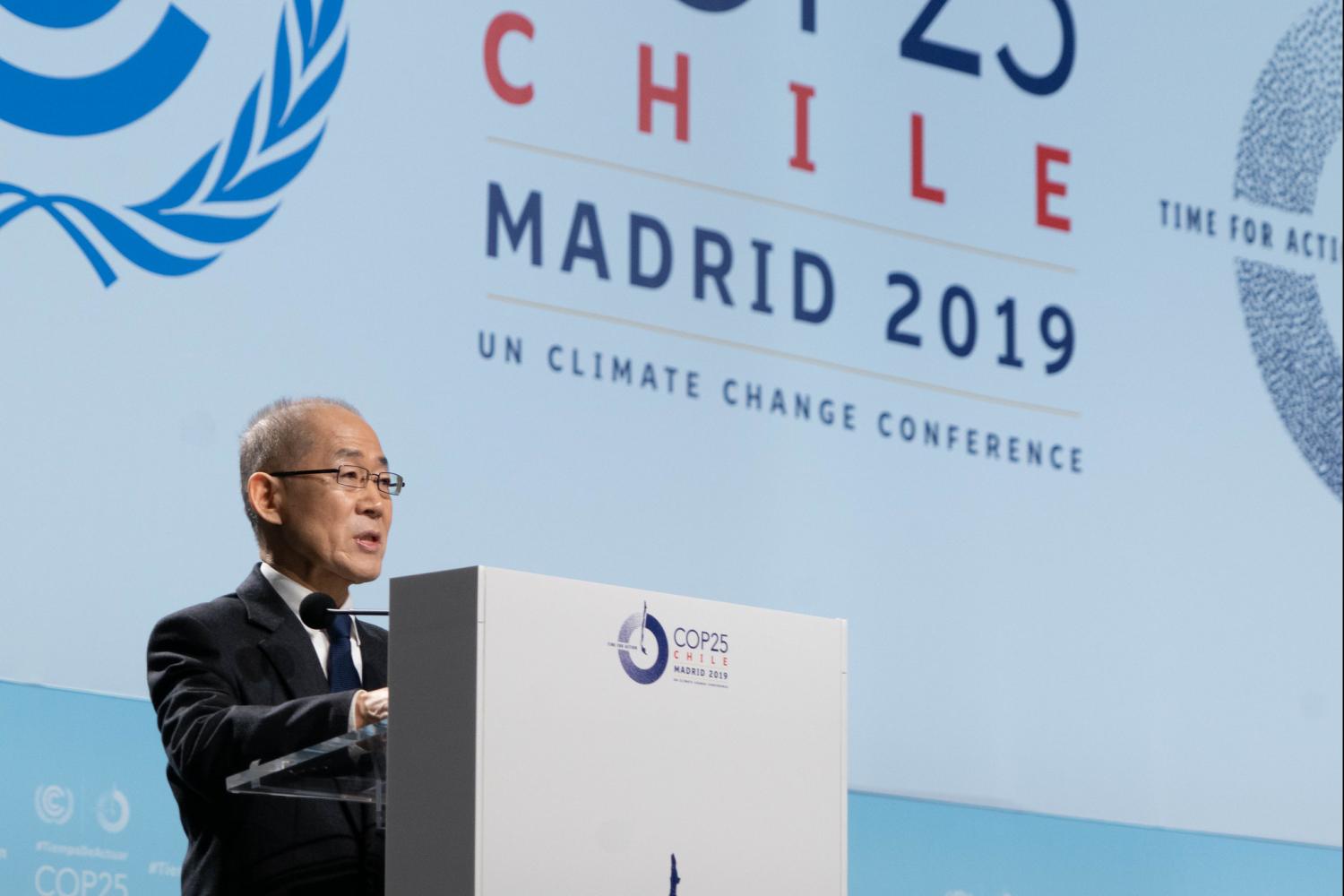
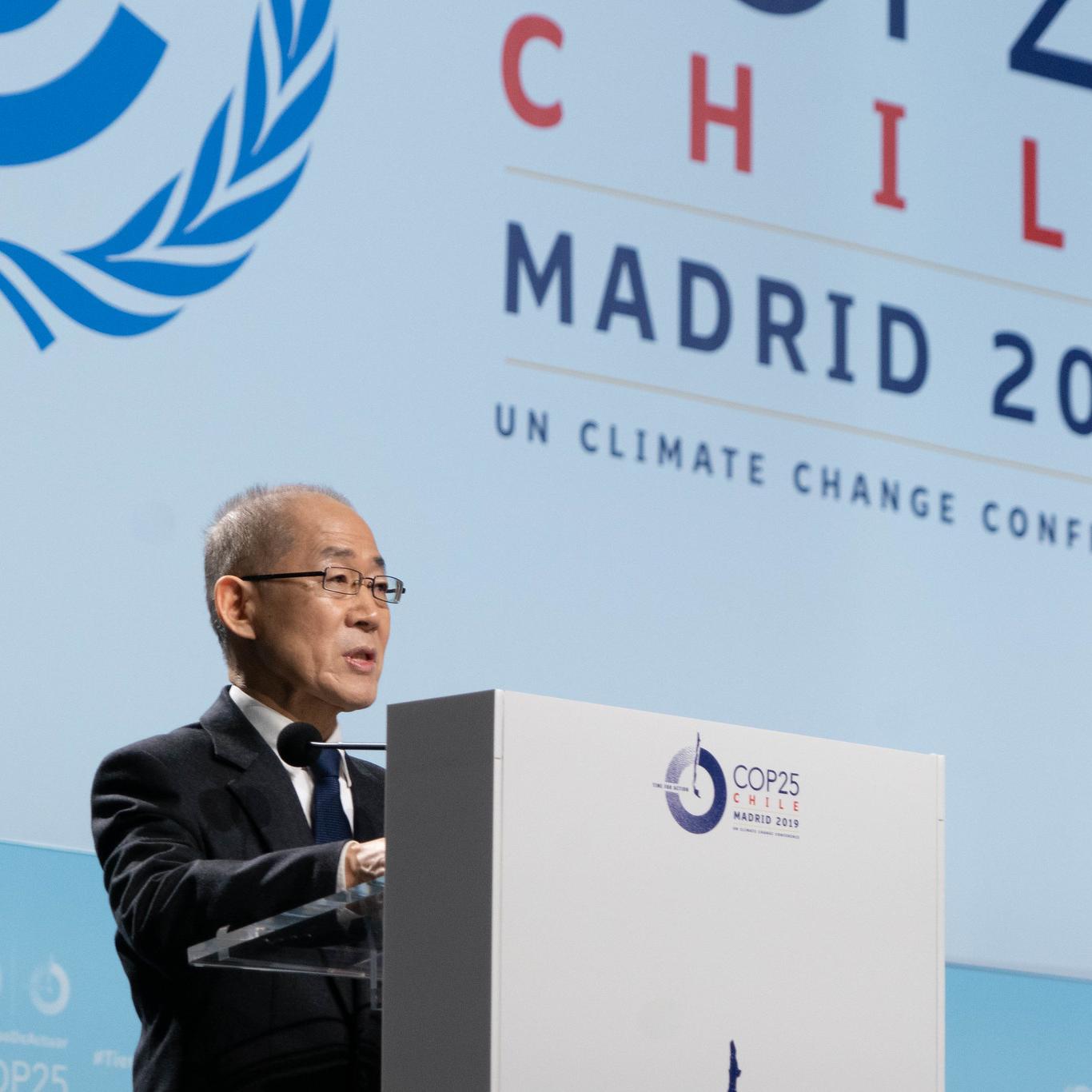
(Image: Hoesung Lee, chair of the Intergovernmental Panel on Climate Change, addresses the crowd on Dec. 2 at the U.N. COP25 climate talks in Madrid, where world leaders will continue to discuss and refine the Paris Agreement.)
With the Green New Deal percolating in the background, some U.S. policymakers are beginning to turn their attention to the impacts of climate change and economic decarbonization on workers and their communities.
Now the AFL-CIO, the largest labor union in the nation, has joined 75 leading CEOs in support of that trend. On Monday, they issued a joint statement that articulates how the Paris Agreement on climate change supports the emerging concept of a “just transition” toward a decarbonized economy—one in which social equity grows alongside environmental sustainability.
Sustainability and survival in the era of climate change
By connecting climate action with labor and social justice issues, the new joint statement makes it clear that planning ahead for upheaval in the labor market is just as important as accelerating the pace of decarbonization.
Globally, climate impacts are already feeding labor disruptions and political conflict, leading to a cascade of displacement and refugee crises in parts of the world.
U.S. businesses that seek a more stable, predictable environment for future ventures must create new alliances in the absence of a strong national policy on climate change.
Climate cooperation: strength in numbers
Though the new joint statement on the Paris Agreement is a domestic effort, it is positioned for global impact.
Along with its domestic affiliates, the AFL-CIO represents more than 12.5 million U.S. workers in fields as diverse as the performing arts and radio as well as key decarbonization sectors including agriculture, energy, transportation, construction, manufacturing and more.
In addition, AFL-CIO is an affiliate of the International Trade Union Confederation. Spanning 163 countries and territories, ITUC has 207 million workers on its roster.
At first glance the 75 CEOs represent a much smaller number. According to the joint statement, they collectively employ about 2 million people in the U.S.
However, many of the companies represented are the U.S. branches of global businesses. L’Oréal’s 11,000 U.S. employees, for example, form just one part of the company’s global workforce of 86,000.
The joint labor union and CEO statement on the Paris Agreement
The joint statement was released on Dec. 2 under the umbrella of a new group called United for the Paris Agreement. The timing is of critical significance, as it coincides with the opening of COP25, the United Nations climate change conference in Madrid, Spain.
U.S. President Donald Trump is still bent on pulling the U.S. out of the Paris Agreement, but many state and local policymakers are still dedicated to the decarbonization goals of the Agreement. The joint statement provides a powerful lever of support for those efforts as the U.N. climate talks get under way.
In their statement, AFL-CIO and the 75 CEOs make the case for affirming the Paris goals as a matter of national economic policy. They insist climate action is “what’s best for the economic health, jobs, and competitiveness of our companies and our country.” They also note that the Paris Agreement supports predictability in the private sector, because it establishes the kind of precise goals that provide for innovation and long-term planning.
Above all, the statement emphasizes that U.S. policy on climate change is out of step with public sentiment.
The signatories note that U.S. companies need to compete “under the shifting expectations of Americans.” And those expectations are coming into sharp focus as consumers, clients and other individuals seek out business with a strong sustainability profile. According to the joint statement, 77 percent of registered American voters support the Paris Agreement.
In addition, it counts more than 4,000 U.S. states, cities and businesses supporting the Paris Agreement.
Sustainability and a just transition
As for the need to work quickly toward a just transition, the statement focuses on the disruptive impacts of climate change, which have already manifested in parts of the world and in the U.S., too:
“Today, with record temperatures across the country, fiercer hurricanes pummeling coasts, more destructive wildfires, droughts and flooding disrupting the economy, we have no time to waste.”
The signatories draw a direct connection between supporting the Paris Agreement and supporting a just transition:
“We stand by our conviction that a commitment to the Paris Agreement requires a just transition of the workforce—one that respects labor rights and is achieved through dialogue with workers and their unions. Participation in the Paris Agreement enables us to plan for a just transition and create new decent, family-supporting jobs and economic opportunity.”
Think globally, act locally—but it’s complicated
This message may not reach into the Oval Office, but then again, most likely the president is not the intended audience. The message is one of support for local efforts to plan ahead for the workforce transition as the private sector sets aggressive decarbonization goals.
Together, the 75 CEO signatories represent companies that have business interests in practically every community in the U.S. The list includes Mastercard, CitiGroup, Microsoft, PepsiCo, the Coca-Cola Co., the Walt Disney Co. and Apple, among others.
The group of 75 also puts companies that are far ahead in the sustainability field on common ground with others that have much more catching up to do. For example, Patagonia and Levi-Strauss & Co. signed the joint statement. So have Cargill, Dow, and the global petroleum firm Total.
Another area of complication lies within AFL-CIO, which represents workers across all areas of energy production, including fossil fuels.
As the U.N. climate talks move forward, it will be interesting to see if AFL-CIO and the 75 executives balance these areas of conflicting interests and follow up on their joint statement with concrete plans for action.
Image: Flickr/UNclimatechange
New 'World War Zero' Campaign Pitches Climate Action For Everyone—Left, Right and Center


In a country where the leaders of one political party continue to deny the science behind climate change, it would seem impossible to form a bipartisan coalition aimed at accelerating the decarbonization of the global economy. Nevertheless, a new campaign called World War Zero has adopted an approach that just might work.
What is World War Zero?
World War Zero launched last weekend with the support of John Kerry, Arnold Schwarzenegger and other celebrities. The star power is certainly helpful in cutting through the media clutter, but there is an additional force driving the campaign.
Behind the list of famous names is a coalition with a strong bottom-line interest in the clean power transition—and in the threat climate change poses to national security.
The campaign is a partner of the American Security Project, a think tank aimed at encouraging a bipartisan approach to addressing threats to national security. In addition to climate change, the American Security Project lists terrorism, nuclear proliferation, energy challenges and economic wellbeing among its areas of focus.
The need to unite against common foes when U.S. interests are threatened would seem to go without saying. However, the problem is that today’s political leadership cannot agree on the nature of those foes.
Building consensus on climate change
The American Security Project attempts to achieve consensus by emphasizing the wider challenges of national security in today’s world:
“Gone are the days when a nation’s security could be measured by bombers and battleships. Security in this new era requires harnessing all of America’s strengths: the force of our diplomacy; the might of our military; the vigor and competitiveness of our economy; and the power of our ideals.”
That’s all well and good, but the problem is still how to bridge a political divide in which one side persists in denying the scientific consensus on climate change. That’s where something called the Business Council for American Security (BCAS) comes in.
As an affiliate of the American Security Council, BCAS provides the organization with a perspective on national security that can best be described through the lens of corporate social responsibility (CSR).
As expressed by the American Security Project, “Bringing the voice of enterprise into the national security dialogue will not only enhance ASP’s impact, it will enhance the role of business as a force for change.”
Business leaders are increasingly drawn to evidence that a strong corporate social responsibility profile is a necessary element in a successful company, regardless of the political affiliation of top executives.
As part of the CSR trend, business leaders have also helped to accelerate the renewable energy transition here in the U.S. and around the globe.
Connecting climate change and national security
From the perspective of corporate social responsibility and military readiness, climate change is not a partisan issue at all. It is an issue of fundamental national concern.
Last week, for example, the American Security Project called attention to the impacts of climate change on military installations, and the steps that the Department of Defense is undertaking to address those impacts.
In particular, the organization noted severe flooding at Offutt Air Force Base last spring and the impact of Hurricane Michael on Tyndall Air Force Base in 2018:
“Experts predict it will take years to rebuild both bases and cost billions of taxpayer dollars. In part due to the damage at Tyndall and Offutt Air Force Bases, the Air Force requested supplemental funding for this year, and an additional $3.7 billion for fiscal years 2020 and 2021.”
ASP further noted that “without the additional funding, the Air Force may need to forego regularly scheduled facility maintenance, ground combat aircraft, and cut flying time for non-deploying squadrons. Such cuts will affect military readiness and put U.S. national security at risk.”
Support our troops: Climate change edition
ASP’s focus on the military impacts of climate change gives new life to the shop-worn slogan, “Support our troops!”
With that in mind, the choice of World War Zero as the title of the new campaign is no accident.
The campaign appeals to business leaders, political leaders and the general public to unite against a common foe, as “unlikely allies with one common mission: making the world respond to the climate crisis the same way we mobilized to win World War II,” the organizers write.
If that approach seems too optimistic, maybe so.
However, World War Zero is underpinned by a solid platform of corporate leadership on clean energy, clean technology and climate action. And that leadership has already begun to move the needle on bipartisan political action.
There is still a long way to go, but the World War Zero campaign could help amplify the voice of corporate leaders who see climate action as the key to their companies’ ability to survive, and thrive, in the coming years.
Image credit: Jem Sanchez/Pexels
REI Opts to Lead Retailers Big Time on Shifting to the Circular Economy
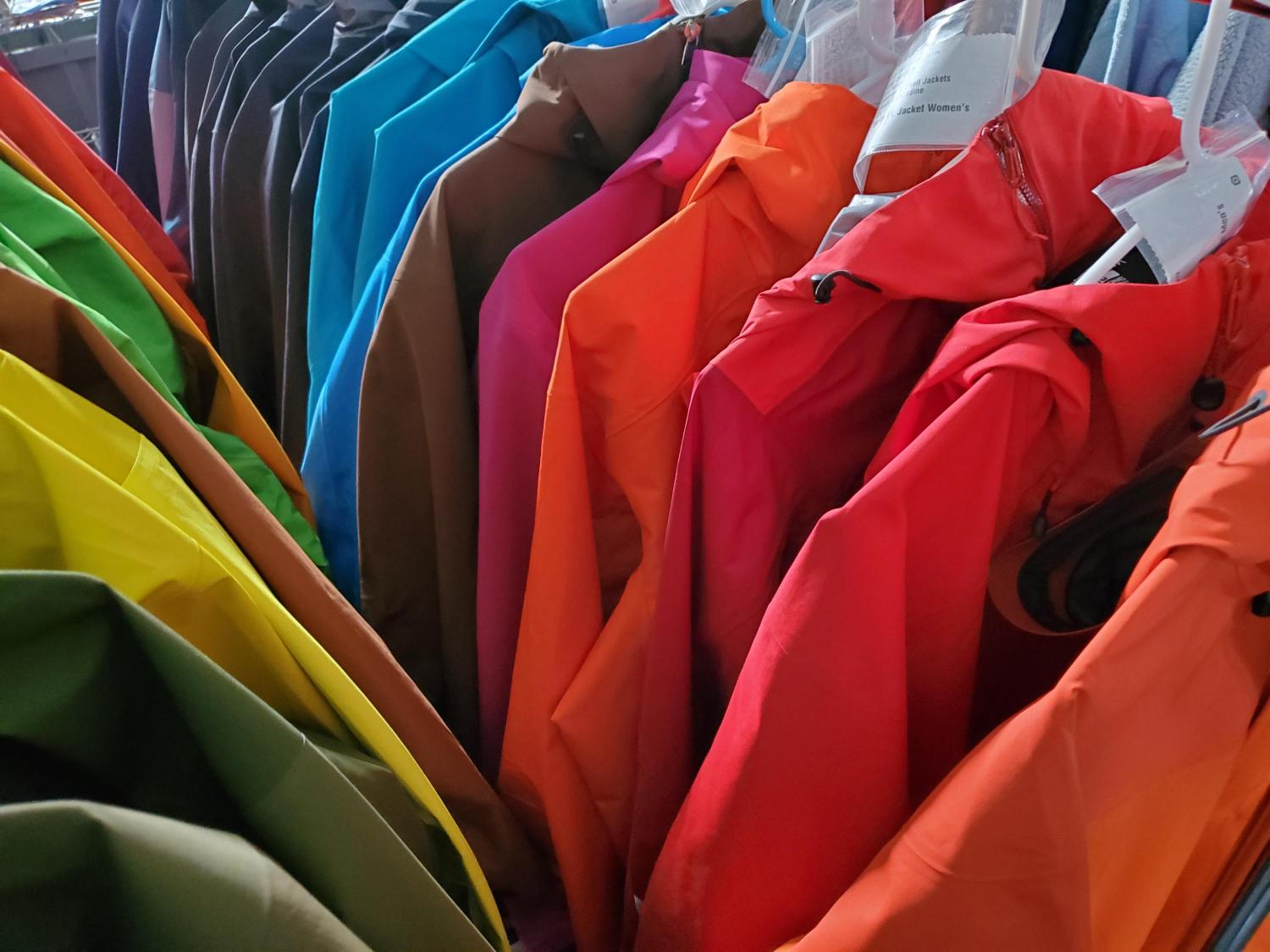
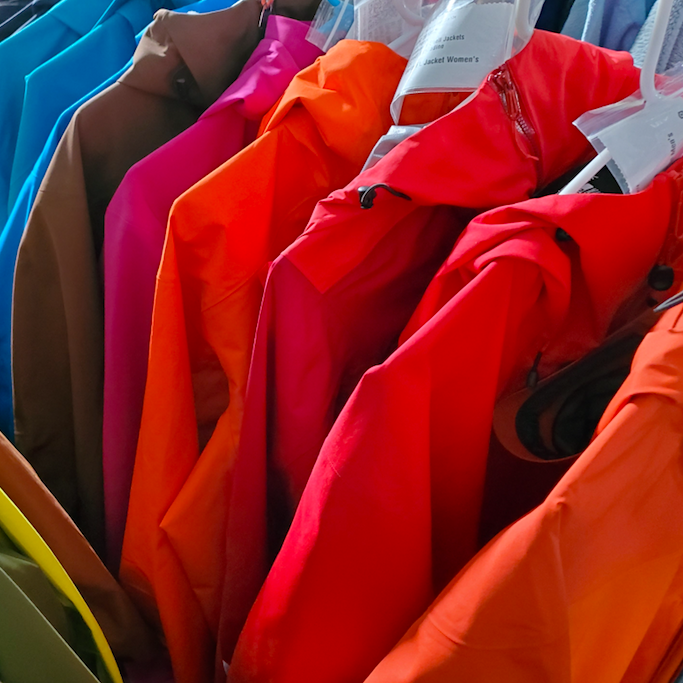
There’s been a lot of talk about the circular economy, which generates more talk, more press releases, more events, more partnerships and then, more talk. But the outdoor gear and apparel company REI, well-known for its #OptOutside campaigns and staying closed on Black Friday, is also opting to expand the circular economy to its members and customers – and doing so aggressively.
The Seattle-based co-op is doing so by expanding its popular “garage sales” online. If you’re an REI member, you’re aware of the quarterly sales at many of its locations, at which lightly used or returned goods are sold at a steep discount. Disneyland would blush at those lines that are queued up long before those sales begin. Many outdoor enthusiasts, however, are located quite far from an REI location, and that demand for well-priced and used goods in part led the retailer to start partnering with Yerdle, a Northern California-based company that designs the online architecture allowing brands to resell returned or used items online.
“Partnering with Yerdle allows REI to build on the successes of its in-store garage sales and get niche product in the hands of people who can continue to use it,” said an REI spokesperson while TriplePundit toured Yerdle’s warehouse in Brisbane, California earlier this fall.
Walking around the cavernous Yerdle warehouse is akin to wandering around any apparel retailer’s fulfillment center, with a few notable differences. At Yerdle, the massive boxes that arrive are items that for the most part were returned by online shoppers. The vast majority of these items are in perfectly fine shape, but there’s no way REI (or other retailers like Patagonia that works with Yerdle) could sell those items again at full time.
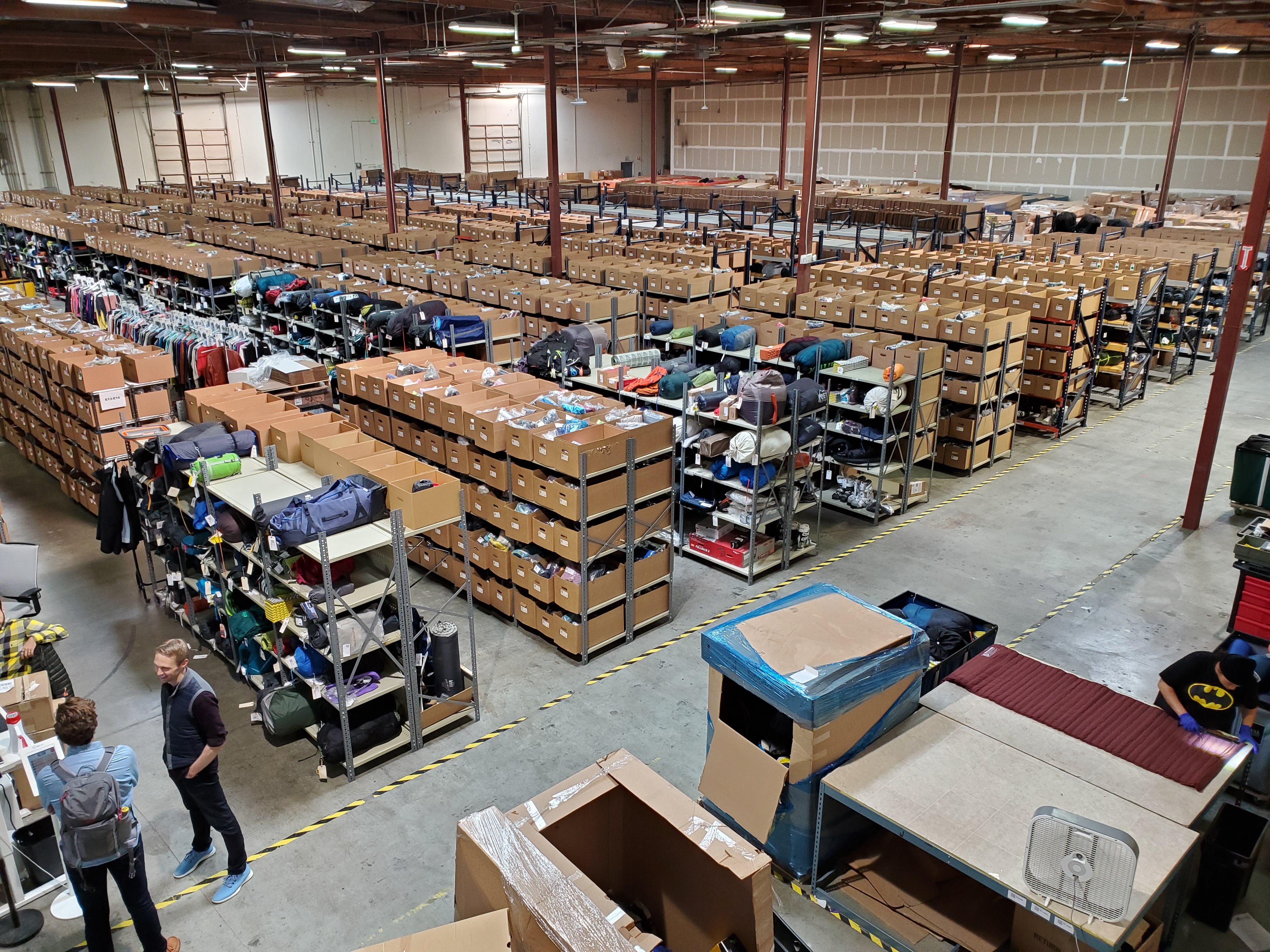
Photo: A view of Yerdle's warehouse in Brisbane, CA
Hence there is a team of Yerdle employees who is tasked with inspecting these items – and do everything from light cleaning to small repairs, to assessing the condition of these items for resale and then entering that data on a tablet. Other employees repackage and store the items until they are ready to be sold and shipped yet again. One highlight was watching a Yerdle photographer whose job it was to capture these items so they look attractive once they are posted on REI’s used gear and apparel website.
According to the company, REI is on track to resell nearly a million used items by the end of this year 2019, and this segment of its business is on target to nearly double in revenue in 2019 compared to the previous year. Over one-third of REI’s used gear and rental customers are brand-new members; and one-third of REI’s rental customers are millennials. The most popular products since this site launched have been camping goods such as tents and sleeping bags, hiking boots, women’s apparel and synthetic outerwear – understandable when you consider the cost of buying these items.
Perusing through REI’s used gear and apparel website is like surfing through any other retailers’ site – you can search by brand, color, size – as well as the condition of the product as well.
For those consumers such as the occasional campers or skiers who would rather not buy these items in the first place, REI also operates a rental service, which company representatives say is also quickly growing.
Currently, the company is piloting a buy-back program with Yerdle in which members can
buy, sell and trade in their unwanted used outdoor gear and apparel. At the moment this program is limited to members who the company has invited to test this online program.
For retailers keen on becoming part of the circular economy, REI offers ideas on how to words into action. Over past decade, various retailers on both sides of the pond have tinkered with recycling clothing and having clothing donation stations plunked within their stores. But the reality is that scaling up textile recycling has been a fitful experience at best – after all, if these programs were successful, we’d be hearing about them. There are huge hurdles to going circular by recycling textiles – changing consumers’ habits at an epic scale, making clothing out of blends that allow for effective recycling (if that cotton stretch t-shirt has 5 percent nylon, sorry, you’re out of luck) and having apparel companies agree to completely transform their supply chains.
But if we went back to quality products, took good care of them, and then allowed someone else to reuse and repurchase them, such a change could help mitigate the global garment industry’s environmental and social impacts. REI is off to a solid start – even if it falls short of its million-items goal this year, its achievements so far are nothing to sniff at.
Image credit: Leon Kaye
P&G, GE Join Forces to Encourage Girls to Consider STEM Careers
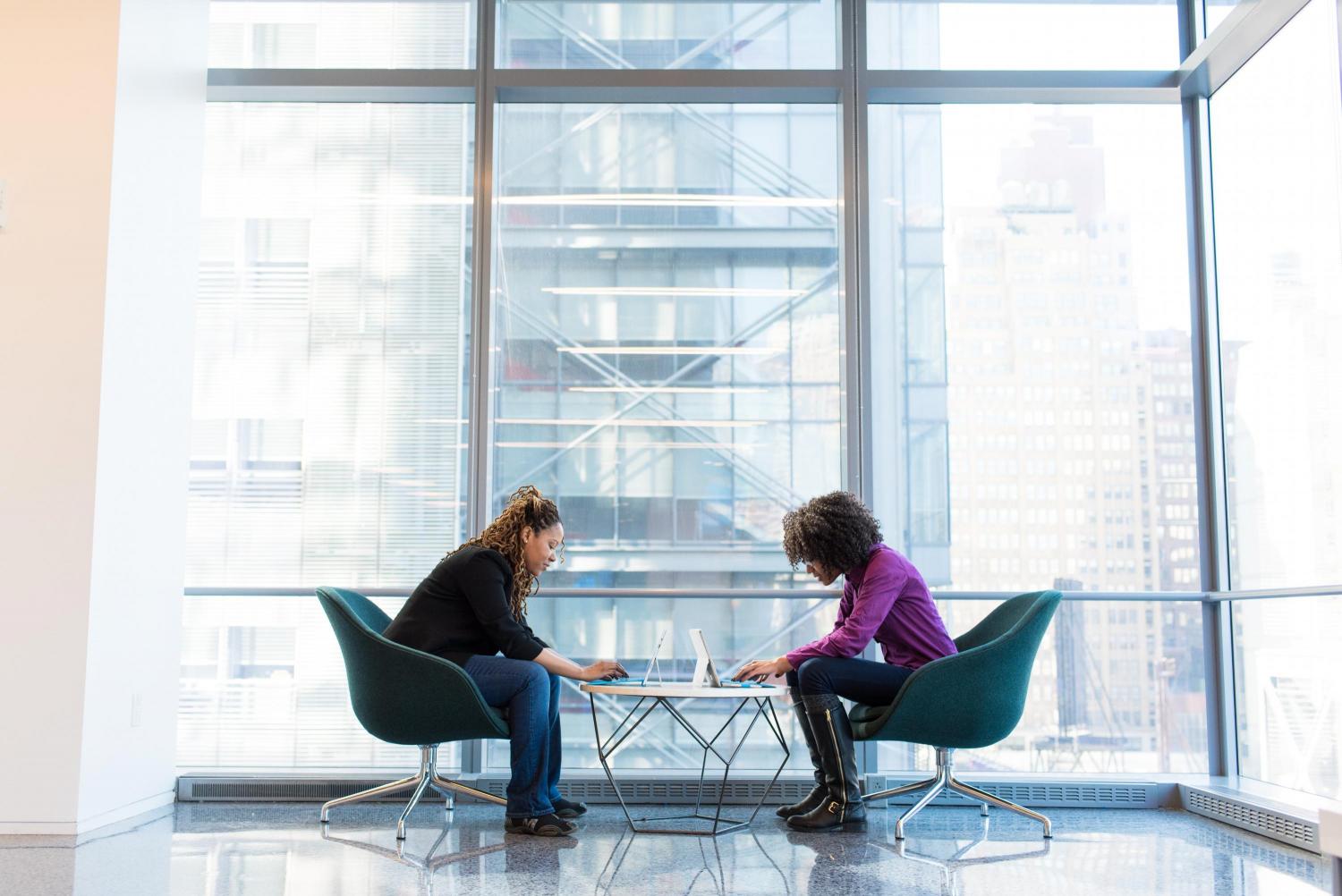

According to the U.S. Bureau of Labor Statistics, there will be well over 10.5 million jobs in STEM (science, technology, engineering and math) by 2028—and those jobs will pay almost 2.5 times the average salary. Most experts agree there will not be enough applicants to fill all these jobs in the coming years.
Despite the evidence that, yes, boys and girls have the same aptitude when it comes to subjects as math, there are also countless reasons why women are often discouraged from pursuing STEM-related careers. The “bro” culture in Silicon Valley (or “brogrammer” mentality), longstanding trends in higher education, companies failing to back up words with recruitment efforts, and the lack of female executives at tech and engineering companies are just a few reasons why women interested in STEM often end up pursuing other careers out of frustration. This keeps happening despite the fact many of the world’s leading companies say they are taking action to address this challenge.
To that end, Procter & Gamble joined forces with GE Aviation to hold a workshop for about 200 girls, grades six through nine, last month in Cincinnati, home to P&G’s headquarters. Other companies that participated included E&Y and Google.
An event for 200 students may seem like a drop in the bucket, but the point here is that an old adage applies: Get them while they’re young. There is no shortage of stories about boys being quick to raise their hands in class while social norms long discouraged the same type of academic enthusiasm in girls. Decades of convention will not change overnight. Hence the support that P&G and GE are offering for such events needs to be repeated, scaled up and, yes, publicized.
To P&G’s credit, the CPG giant is adopting other tactics to support STEM inclusion in the markets it serves, as well as include more women with STEM backgrounds in its ranks.
One program the company has launched takes care of another often overlooked demographic—women who have paused their career trajectories in order to raise kids or take care of a family member for health reasons. The company also supports girls' STEM education in the U.S. in partnership with Girls Who Code, as well as in other markets such as Cairo, Egypt, as summarized in its 2019 Citizenship Report released this week (page 109 for reference).
Here at 3p, watch for us to cover this trend more in 2020, because companies that strive to have an inclusive culture in what are traditionally male-dominated industries are doing the right thing for many reasons: It’s good for upward mobility, good for our economy, and can help make for a more energized and engaged workforce.
Image credit: Unsplash
The Sports Sector Takes a Stand For Sustainability: What’s Next?


Sports were an underlying theme at the 2019 3BL Forum just outside Washington, D.C., this fall. As hundreds of business leaders convened to discuss what’s next in the brands taking stands movement, the hometown Washington Nationals battled it out against the Houston Astros in the 2019 World Series.
Speakers donned caps and led the crowd in cheers for the home team—and, as it turned out, it paid off. The Nats defeated the Astros on the first night of the Forum, tying the series 3-3 and forcing a Game 7 faceoff—where they came away with a decisive 6-2 win, claiming the first World Series title in franchise history.
But the Nationals’ upset victory wasn’t the only reason we heard so much about sports while discussing the rise of corporate, employee and consumer activism. Sports teams, leagues and franchises are, of course, businesses—and in many ways, they have everything any business could want: unbridled fan engagement and fierce loyalty that lasts a lifetime.
“Sports, culture and the arts are true common denominators in our society and throughout the world,” Kevin Martinez, vice president of corporate citizenship for ESPN, said at the Forum.
As de-facto cultural leaders of their hometowns, often with pockets of fans that stretch across the country and around the world, sports franchises are in a unique position to leverage their clout to influence public discourse long after the final whistle. Increasingly, sports stakeholders are taking up this mantle with pride, moving beyond the game to engage fans, players and communities in making the world a better place—including support for social and environmental change.
At the Forum, Alicia Chin, senior manager of social impact and growth initiatives for the National Hockey League, shared just one of these case studies—which can serve as an example not only for the sports sector, but for any business looking to take a stand for a brighter future.

The NHL: An untold story of sustainability
It has been 10 years since the NHL began its sustainability journey in earnest, but its work remains largely under the radar. Still, taking a stand for positive environmental impact makes sense for an organization like the NHL—which depends on cold weather at a time when global temperature rise is altering when, where and how games can be played.
“People always ask us, ‘Why does NHL care about the environment?’” Chin said at the Forum. “But if you think about it, our sport was born on frozen ponds, and as the climate continues to change, access to those ponds decreases. Similarly, we play in a giant refrigerator: A lot of energy is required for us to play on ice, as well as water, so we have a responsibility to reduce our impact and continue to make sure that our sport can be played for future generations.”
The NHL was the first North American professional sports league to issue sustainability reports including a carbon footprint, and it has offset that carbon footprint for three consecutive seasons.
Moving forward, the league is going beyond engagement with its professional franchises to help community ice rinks across the U.S. decrease their environmental impact and costs, ensuring longevity for the long term.
“Many of these community rinks are 20 to 30 years old. Their infrastructure is really outdated,” Chin explained. “To help community rinks continue to stay open, we are taking those best practices that our arenas have adopted and translating them to the community rink space.”
“Particularly with the Montreal Protocol Kigali amendment kicking in, where HFCs are being phased out, refrigerants are becoming a massive issue for our industry,” she continued. “So, we are investing in helping rink operators and owners understand how they can invest in new environmental sustainability technology.”
Through its Greener Rinks Initiative, the NHL launched a multiyear partnership with the chemical company Chemours to provide sustainable refrigerants to community rinks—and the program has already evaluated the impact of more than 4,800 rinks across North America. “Again, this is all about helping these rinks stay open, because our goal is to continue to increase access to our sport,” Chin said.
Can sustainability boost inclusion?
(Image: Alicia Chin of the NHL (center) speaks at the 2019 3BL Forum alongside Kevin Martinez of ESPN (right) and Roger McClendon of the Green Sports Alliance.)
The fact that hockey is a sport historically dominated by white people is well known—and the butt of plenty of bad jokes. But Chin and her team hope that the NHL’s drive toward environmental and social sustainability can help to get new fans, players and communities interested.
“We also think about how sustainability can help hockey become a more inclusive sport,” Chin said at the Forum. As part of several initiatives aimed at increasing inclusion within hockey, the NHL’s Learn to Play program disburses used equipment and grants free ice time to families who otherwise couldn’t afford to get their kids involved in sport.
“Obviously diversity and inclusion is an important issue—particularly, I would say, for hockey. We want to reduce those barriers to our game: Do people feel welcome in the sport? Do they have access to places to play? And can they afford it?”
(Image: Roger McClendon, executive director of the Green Sports Alliance, on stage at the 2019 3BL Forum.)
What’s next for sports and sustainability?
It’s not hard to find examples of sports industry stakeholders that engage consistently with their communities around the environment and social change. But the sports sector is still only scratching the surface of the impact they can have, says Roger McClendon, executive director of the Green Sports Alliance (GSA), a convening organization for sports and sustainability.
“The power of sport, in my mind, is really under leveraged,” McClendon said at the Forum. Given the increasing social and environmental challenges we face—from the climate crisis to increasing social division that’s driving racial and socioeconomic tensions worldwide—it’s time for sports to tap into its true potential, McClendon said.
The GSA’s Playing for the Next Generation campaign focuses on fighting climate change, improving communities, and engaging youth in both sports and driving positive impact. Its 10th annual Green Sports Summit, to be held at U.S. Bank Stadium in Minneapolis in June 2020, focuses on the future of the campaign—and sports and sustainability more broadly.
“There's a lifetime loyalty with teams, but fans increasingly want their teams to do more to engage with the community and to leave a better footprint than where they started,” he told business leaders at the Forum. “We can't be satisfied based on where we stand today. Given the crises we're in, we have to do more.”
Image credits: Unsplash/Jimmy Conover, Flickr/pmonaghan and 3BL Media
Murals Can Brilliantly Paint a Picture of Climate Change Risks


Can murals help spread the message about how climate change risks, including sea level rise, can impose on the planet – notably coastal communities?
Why not? Murals can help sooth the soul, teach a lesson or two and offer a boost to local businesses, too – from fabulous Miami Beach to Honolulu and countless towns in between, like adorable Morro Bay, California.
This month, the nonprofit PangeaSeed Foundation, working with Clean Sweep Frederiksted, will launch a public art program in St. Croix, U.S. Virgin Islands. For this ten-day public art program, PangeaSeed says it has agreed to partner with The Ocean Agency’s Glowing Glowing Gone campaign in order to raise public awareness of the urgent crisis facing coral reefs in the Caribbean and around the world.

Above: mural by Charlie Johnston, Churchill, Manitoba, Canada.
This campaign is important as coral reefs provide citizens worldwide with food and income, while supporting approximately a quarter of all oceanic life. The Glowing Glowing Gone campaign, which has been working with UN Environment, aims, in its words, to “inspire the policy and funding necessary to save coral reefs through a global show of popular support.” As seen through the rapid-fire growth in public awareness of the dangers of ocean plastics, this organization seeks to utilize creativity to spark more action within coastal communities worldwide.
PangeaSeed’s program, “Sea Walls: Artists for Oceans” has already made its mark in many communities worldwide. Some of the artists whose work is shown here - both on coasts and inland - on 3p today are currently at work in St. Croix . . . so consider these beauties a hint of what’s to come in the Caribbean.

Above: mural by Aaron Glasson, San Diego, CA
There are several reasons why murals and other public art installations can be a boost for local businesses as well as promote the messages we hear if we’re going to truly band together and save the planet. Murals impart that a particular building or city block is being cared for; they can inspire action without being preachy; and because they discourage tagging or other forms of vandalism, they actually can be relatively easy to maintain and care for.
Image credit, including the lead photo,“Slow Surrender” by Carly Ealey in Napier, New Zealand: PangeaSeed Foundation
2019 in Review: The 10 Most Read Articles on TriplePundit
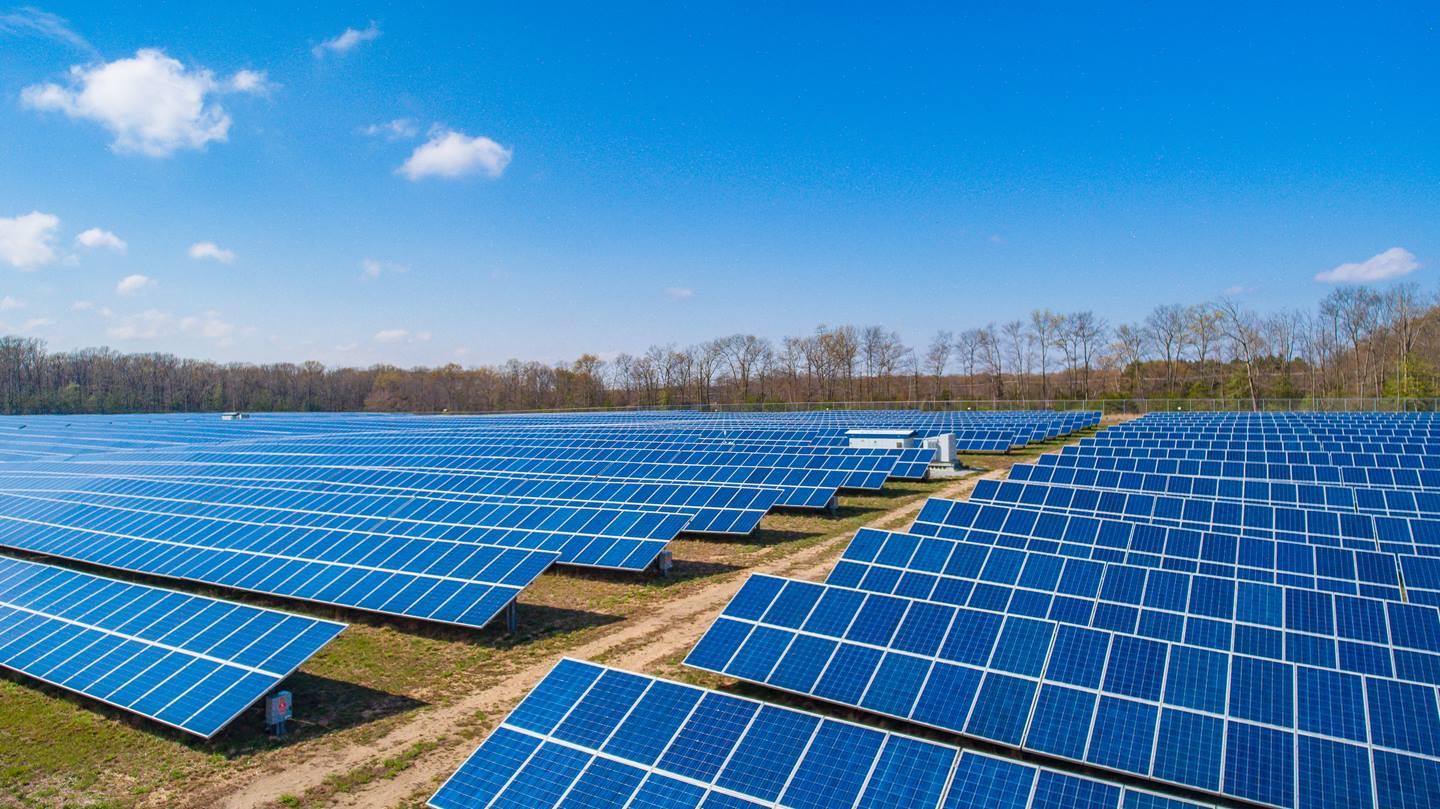
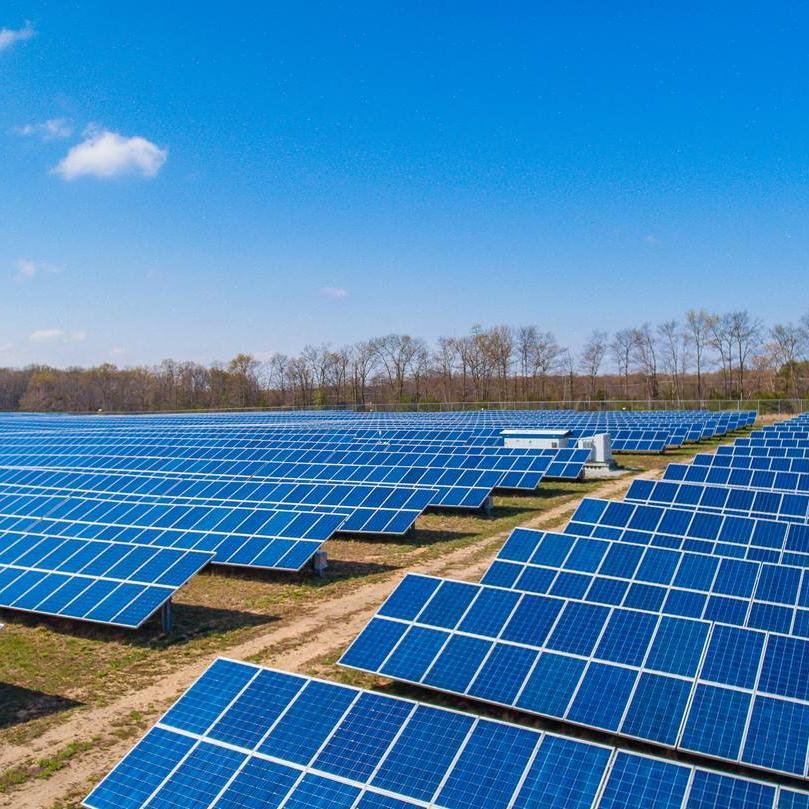
We weren’t planning for this year to fly by as quickly as it has, but now that it’s time to take a look at 2019 in review, we ran the numbers to present you with the most popular TriplePundit articles for this year.
In looking at trends for what resonated with our readers during 2019, a few things come to mind: Readers are responding to legacy companies determined to change how they conduct business; the concepts defining diversity and inclusion are changing; renewables will take root in the U.S. despite a hostile White House; and we have a long road ahead to ensure we have the best possibly prepared and trained workforce for the future.
This all makes sense, because if we expect companies to become more responsible and sustainable, we need to ensure that they remain viable, too.
The following list was a great walk down memory lane. Enjoy!
CEO Shares How Transparency Helps SC Johnson Address Global 'Crisis of Trust': 3p spoke with SC Johnson’s CEO to learn more about its industry-leading transparency program and how it helps the cleaning products giant maintain trust at a time when it's in increasingly short supply. Corporate sustainability professionals must have bookmarked this article like mad; this was our most read article during 2019, month after month. (Mary Mazzoni)
Offshore Wind Power Is Crushing Carbon Capture Dreams: Once Denmark’s fossil fuels titan, Ørsted rebranded and is now going all-in on renewables — and as it finds more opportunities to invest here in the U.S., proponents of carbon capture are finding less interest in what was at one time a much-ballyhooed clean technology. (Tina Casey)
Tupperware: A Legacy Brand Embracing a Sustainable Future: To paraphrase those 1970s television commercials, the Tupperware lady has the freshest ideas for locking in . . . corporate sustainability. Read how a decades-old company that makes plastic products is planning for the circular economy. (Mary Mazzoni)
12 Plant-Based Foods Coming to Market in 2019: Like many publications, we write listicles and predictions in January — and quite often, come December, we hope no one reads or remembers them. But remember when the conversation about plant-based foods was all about Beyond Meat and Impossible Foods, only to see that months later, more companies now have (plant-based) skin in the game? Many of these predictions and trends have come to fruition. (Mary Mazzoni)
CVS Quit Cigarettes So Americans Would Too—And It Worked: Stop yourself if you clench your jaw at the local CVS while the register prints a receipt a mile long for the three items you purchased. Five years ago, this company stuck its neck out and stopped selling profitable tobacco products. Considering all the controversy over vaping the past few months, that 2014 decision was one of the smartest, and most forward-thinking decisions, a retailer ever made — and years later, everyone else in the industry looked like meek followers. (Patrick Grubbs)
New Plastic Pollution Solution May Produce Sustainable Fuel: We’ve yet to see whether those discarded PET bottles can be churned into transport fuel or electricity seamlessly, but we think this article by our clean tech guru resonated due to this simple fact: We’re trashing the planet with single-use plastic, and we’re realizing we need solutions to stall this crisis. (Tina Casey)
Old Navy Makes Purple Patriotic for a Good Cause: Why would a story about a purple T-shirt resonate with readers? Well for one thing, there is far worse news marring the global fashion industry, and with the cesspit called political polarization in which we find ourselves, a message of inclusion struck a chord with our readers. (Megan Amrich)
Why Your Company Needs a Neurodiverse Workforce: The definition of diversity and inclusion is widening, as it should — and this article, part of a series underwritten by DXC Technology, was one of several stories that made the compelling case for hiring citizens on the autism spectrum. For our writers, the opportunity to work on this project was an emotional, uplifting and singular experience. (Amy Brown)
Can a Redesign Make the Airplane Middle Seat Your Favorite?: Well, we think this is obvious — we all hate the middle seat, and we gather this article came up often in internet searches once passengers realized they were stuck in a “B” or “E” seat. But for one of our newest writers, this was among several gems she contributed to 3p over the past several months. (Roya Sabri)
JetBlue Aims to Diversify the Aviation Industry Through STEM Partnerships: The Tuskegee Airmen flew more than 700 bomber escort missions during World War II. They were the first group of African-American aviators in the U.S. Army Air Corps as well as the only fighter group in the entire war to have a perfect record protecting bombers. But when they returned home, many couldn’t get a job in the airline industry. And decades later, African-Americans are still vastly underrepresented in the aviation sector. Here’s how JetBlue is striving to boost the career prospects for people of color who want to be pilots. (Maggie Kohn)
Image credit: Ørsted
Report: The Palm Oil Sector Isn't Living Up To Its Promises

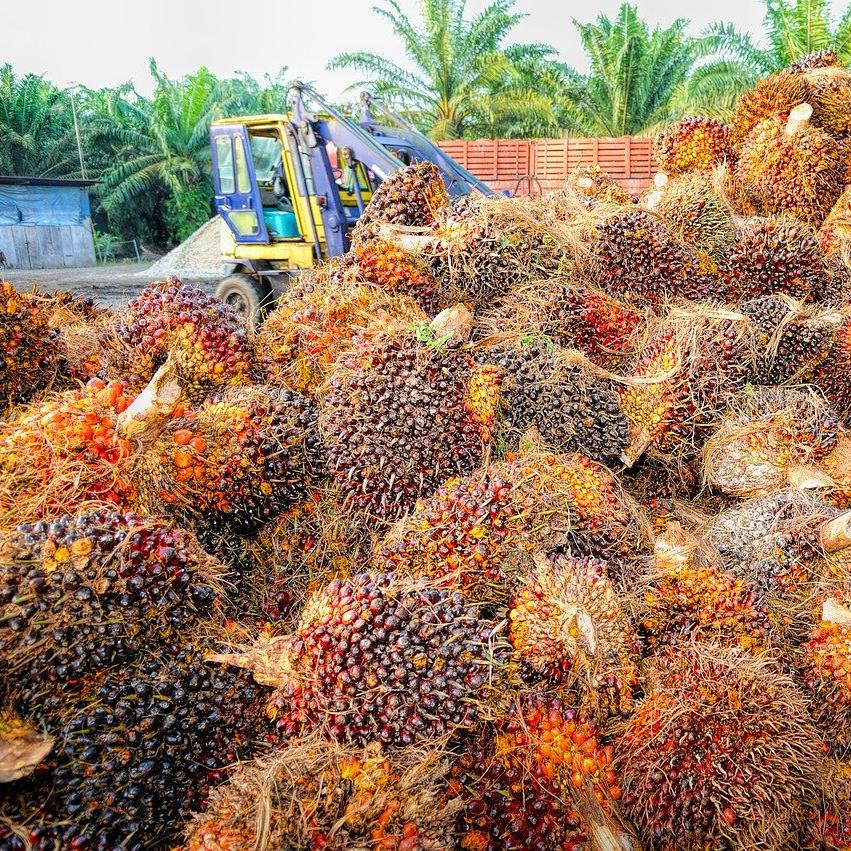
Conventional palm oil production is a known social and environmental blight. For years, we've read about producers destroying biodiverse rainforests and peatlands, displacing vulnerable and endangered wildlife, mistreating local populations, and exploiting labor. The impacts of this ingredient are multiplied by its ubiquity.
In the last few decades, palm oil farms have proliferated rapidly. Production is cheap, and palm oil is now a key raw material used in food, makeup, detergent, biodiesel and much more. But as unsustainable production has increased, so has the destruction of the ecosystems where oil palms grow best. The Amazon, its communities and its diverse wildlife have seen the brunt of this devastation.
In October, the Zoological Society of London (ZSL), an international conservation charity, published a deep-dive into the world’s most significant palm oil companies. The ZSL frequently publishes investigations into the transparency of business action via SPOTT, the Society’s “Sustainability Policy Transparency Toolkit.” The results of this study showed that most of the producers, processors and traders of palm oil are not living up to their environmental promises.
Of the 99 companies analyzed, the ZSL found that 65 percent have committed to zero deforestation and 58 percent have committed to respecting the rights of local communities. Yet only 22 percent of the companies say they can trace 100 percent of their raw materials to the plantations where they were grown. No company can trace 100 percent of its supply.
Tracing agricultural commodities is notoriously difficult, but it's a challenge worth taking, especially if companies want to honor their public commitments.
"Achieving 100 percent traceability in the palm oil sector is difficult, as palm oil supply chains are extremely complex, with palm oil moving between several intermediaries before it makes its way into a product on supermarket shelves,” Michael Guindon, a palm oil technical advisor with ZSL, said in a press statement.
Guindon recommends companies that deal in palm oil survey their sources and consider whether they are supporting farms that align with their corporate values.
“Understanding one's supply chain is a critical step. However, it's only one piece of the puzzle,” he continued. “More importantly, companies should not only understand their supply chain thoroughly—they also need to use their buying power and work intensely to enforce the highest sustainability standards in every palm oil provider they do business with.”
Sustainable palm oil is vastly underutilized
Not every palm oil farm displaces biodiverse ecosystems or mistreats people. Around 20 percent of the world’s palm oil is sourced responsibly and sustainably. That may seem like a proportion that wouldn’t be able to meet global demand, but only half of the certified sustainable palm oil produced today is actually sold as sustainable, with the proper price premiums. Supply greatly exceeds demand.
“Buyers don’t want to pay for it,” Simon Lord, chief sustainability officer at Sime Darby, the world’s largest producer of Certified Sustainable Palm Oil, told the Business Times from Kuala Lumpur. “There is increasing resentment among growers that the other actors in the supply chain are not stepping up.”
Palm oil that isn’t sold as sustainable gets pooled with non-certified oil. Consequently, farmers that are doing the right thing are losing out.
Misalignment of values and actions can cause mistrust amongst investors and customers
Consumer action has ripples across the supply chain. And on-pack messaging such as the green Certified Sustainable Palm Oil label allows customers to see when companies are taking the time and effort to deliberately source from sustainable farms.
For most companies, though, there is a misalignment between messaging and action. The ZSL found that only around a quarter of companies assessed have adopted transparent practices concerning their supplies. As an example, only 26 percent have programs that help high-risk suppliers become compliant with company sustainability policies.
The ZSL emphasizes that supporting responsible palm oil production is the best way to achieve sustainability, to support farming communities and to protect wildlife.
In fact, turning away from palm to another vegetable oil could exacerbate environmental and social problems, the Society found. If grown in the right way, it insists, palm oil can be a highly sustainable commodity.
Oil palms use up to 10 times less land than other plants used for vegetable oil. They also require less fertilizer and pesticides and produce higher yields.
Long story short: Companies need to step up and make sure they are supporting the right farmers, advocates say.
"Companies have a responsibility to ensure the products they're supplying are deforestation-free, preserve biodiversity, and respect the rights of workers and local communities,” Peter van der Werf, senior engagement specialist in the asset management firm Robeco's active ownership team, said in a press statement.
As the ZSL has proven time and again in its reports, industry transparency is lagging in many commodities markets. Since this summer, the ZSL has published three reports on three different industries using the SPOTT analysis. Each of these reports—on timber and pulp, palm oil and, most recently, rubber—revealed a notable lack of transparency about production practices.
This should be a wake-up call to any company involved in palm oil or that uses palm oil—which includes half of the packaged items on supermarket shelves. The ZSL's advice: Trace to the source, whenever and wherever you can. If you don’t like what you find, begin investing in sustainable palm oil. Not taking action may hurt your brand image and your bottom line.
Investors, for one, are perking up to the problem. “Robeco has been engaging with the palm oil sector for nearly 10 years, and we have drawn a line for companies who are not willing to step up their game toward more sustainable practices by excluding them from our investable universe,” Van der Werf said. “At the same time, we are actively engaging with those we believe are capable of reaching the sustainability objectives we set by 2021."
Image credit: Pixabay